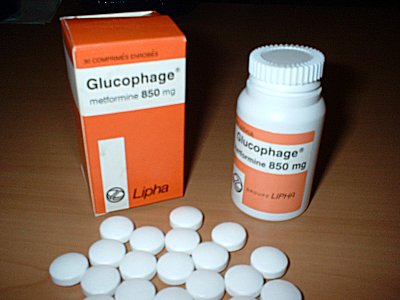
Metformin is accepted widely as first-line treatment for patients with type 2 diabetes, but no clear guidelines exist on how to proceed when metformin monotherapy fails. In three new industry-supported studies, researchers compared available second-line treatments.
In an open-label study, 1029 adults with glycosylated hemoglobin (HbA1c) levels between 6.5% and 9.0% while taking metformin were randomized to add either the glucagon-type peptide-receptor agonist exenatide (Byetta; 5–10 µg subcutaneously twice daily) or the sulfonylurea glimepiride (titrated to maximum tolerated daily dose). During 4 years of follow-up, significantly fewer exenatide recipients than glimepiride recipients (41% vs. 54%) reached the primary endpoint of treatment failure (HbA1c level >9% after 3 months of treatment, or HbA1c level >7% at two consecutive readings after 6 months of treatment). Significantly more patients in the exenatide group than in the glimepiride group reached a target HbA1c level of <7% (44% vs. 31%). Patients who received exenatide lost a mean of 3.3 kg, whereas those who received glimepiride gained a mean of 1.2 kg — a significant difference. Hypoglycemia occurred significantly more often in patients taking glimepiride.
In another open-label trial, researchers randomized 515 adults with HbA1c levels between 7% and 11% while taking metformin to add either once-daily insulin glargine (Lantus; titrated to a fasting glucose level of 72–99 mg/dL) or the dipeptidyl peptidase-4 (DPP-4) inhibitor sitagliptin (Januvia; 100 mg once daily). After 24 weeks, patients who received insulin glargine had a significantly greater reduction in mean HbA1c level than did those who received sitagliptin (–1.7% vs. –1.1%), and more patients who received insulin glargine reached the HbA1c target of 7% (68% vs. 42%). Mean body weight increased slightly in the insulin glargine group and decreased slightly in the sitagliptin group, and significantly more hypoglycemic events occurred in the insulin glargine group (4.2 vs. 0.5 per patient-year).
In the third trial, researchers randomized 1551 patients with HbA1c levels between 6.5% and 10.0% who were taking metformin alone to the DPP-4 inhibitor linagliptin (Tradjenta; 5 mg daily) or to glimepiride (1–4 mg daily, titrated to fasting plasma glucose ≤110 mg/dL). After 2 years, average HbA1c level was –0.16% in the linagliptin group and –0.36% in the glimepiride group. Thirty percent of patients taking linagliptin and 35% of those taking glimepiride reached HbA1c levels <7%. Average body weight decreased slightly with linagliptin and rose slightly with glimepiride; hypoglycemic events occurred in 7% of patients taking linagliptin and in 36% of those taking glimepiride.
Comment: The choice of diabetes therapies is complex, involving patient acceptance, efficacy, and safety. These trials were limited to surrogate endpoints, and all were industry-sponsored (by the makers of exenatide, insulin glargine, and linagliptin, respectively); also, the insulin glargine–sitagliptin trial was very brief. Nevertheless, these trials highlight some of the strengths and weaknesses of the various options for second-line diabetes therapy; the long-term effects of these therapies on glucose metabolism and clinical endpoints remain to be elucidated.
— Bruce Soloway, MD
Published in Journal Watch General Medicine July 10, 2012





 留言列表
留言列表
 線上藥物查詢
線上藥物查詢 